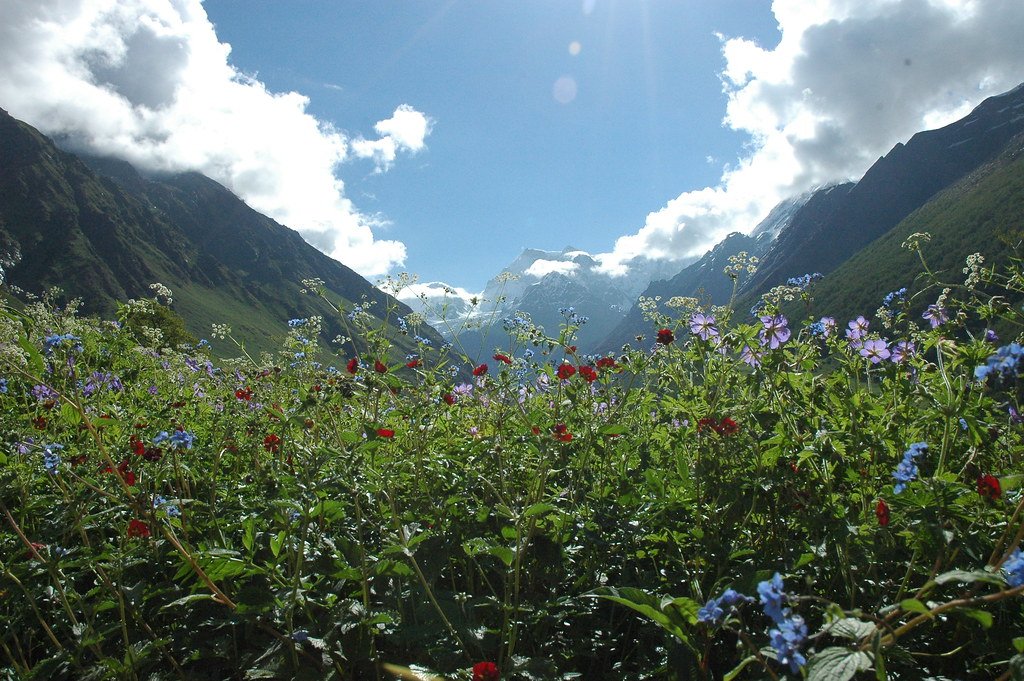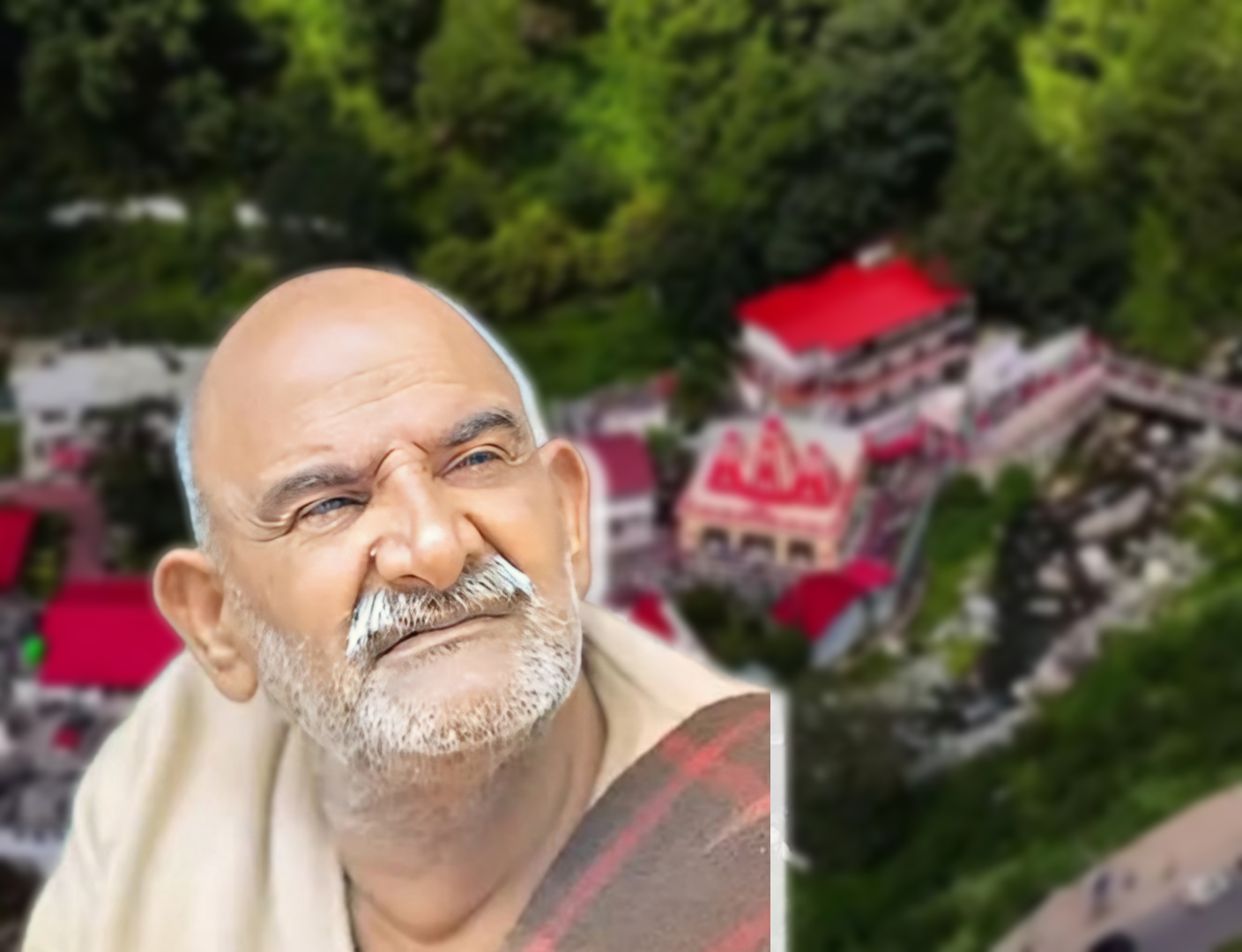Nestled in the heart of the Indian Himalayas, the Valley of Flowers National Park is a mesmerizing tapestry of vibrant blooms set against towering snow-clad peaks. This UNESCO World Heritage Site in Uttarakhand has long captivated the hearts of botanists, trekkers, and nature enthusiasts alike. Join me as I recount my unforgettable journey to this floral paradise, delving into its rich geography, storied history, and the experiences that make it a must-visit destination.
Geography: A Natural Marvel

Situated at an elevation ranging from 3,200 to 6,675 meters (10,500 to 21,900 feet), the Valley of Flowers spans approximately 87.5 square kilometers. This high-altitude Himalayan valley is flanked by the majestic Zanskar and Great Himalaya mountain ranges, creating a unique microclimate that fosters an incredible diversity of flora and fauna.
The valley’s terrain is characterized by lush meadows, cascading waterfalls, and crystal-clear streams fed by glacial melt. The confluence of these natural elements results in a fertile ground where over 500 species of wildflowers, including rare and endangered varieties, flourish during the monsoon months.
History: From Mythology to Modern Discovery

The allure of the Valley of Flowers is deeply rooted in both ancient mythology and modern exploration.
Mythological Significance
According to Hindu mythology, the valley is believed to be the site where Hanuman found the magical herb Sanjeevani, which he used to revive Lakshmana during the epic battle of the Ramayana. This legend adds a layer of spiritual significance to the valley, attracting pilgrims and spiritual seekers.
Modern Discovery
In 1931, British mountaineer Frank S. Smythe and his team, returning from a successful expedition to Mount Kamet, accidentally stumbled upon this hidden valley. Enchanted by its beauty, Smythe documented his findings in the book “The Valley of Flowers,” bringing global attention to the region. This discovery paved the way for further botanical studies and eventually led to the area being designated as a national park in 1982.
My Personal Expedition: A Journey into Bliss
Embarking on a trek to the Valley of Flowers had always been a dream of mine, and the experience surpassed all expectations.
The Trek Begins: Govindghat to Ghangaria
The journey commenced from Govindghat, a small town accessible by road from Haridwar or Rishikesh. From there, a 14-kilometer trek along a well-defined trail led us to Ghangaria, the base camp for the valley. The path meandered alongside the Laxman Ganga River, offering glimpses of cascading waterfalls and dense forests. The camaraderie among fellow trekkers and the ever-changing landscapes made the ascent both enjoyable and invigorating.
Entering the Floral Wonderland
The following day, we set out early for the 3-kilometer trek from Ghangaria to the Valley of Flowers. As we entered the valley, a riot of colors greeted us—endless stretches of blooming flowers swaying gently in the mountain breeze. The sight was nothing short of surreal. Walking amidst such natural splendor, with the fragrance of flowers filling the air and the backdrop of snow-capped peaks, felt like stepping into a living painting.
Flora and Fauna: A Closer Look
During our exploration, we encountered a plethora of floral species, including:

- Brahma Kamal (Saussurea obvallata): The state flower of Uttarakhand, known for its medicinal properties.
- Blue Poppy (Meconopsis aculeata): A rare and delicate flower that adds a splash of blue to the valley’s palette.
- Cobra Lily (Arisaema speciosum): An intriguing plant with a hooded appearance.
The valley also hosts diverse fauna, and while sightings are rare, the presence of animals like the Asiatic black bear, snow leopard, and various bird species adds to the area’s ecological significance.
Practical Information for Future Travelers
For those inspired to visit the Valley of Flowers, here are some essential tips:
- Best Time to Visit: The valley is accessible from June to October, with peak flowering season between July and September.
- Permits: Entry permits are required and can be obtained at the forest check post in Ghangaria.
- Accommodation: Basic lodging is available in Ghangaria. It’s advisable to book in advance during peak season.
- Preparation: The trek is moderate in difficulty. Ensure you’re physically prepared and equipped with appropriate gear, including sturdy footwear and rain protection.
Conclusion: An Unforgettable Experience
My journey to the Valley of Flowers was more than just a trek; it was a soulful immersion into nature’s unparalleled beauty. The harmonious blend of vibrant flora, majestic landscapes, and the valley’s rich history creates an experience that lingers long after you’ve left. For anyone seeking a destination that offers both adventure and tranquility, the Valley of Flowers stands as a testament to the timeless allure of the natural world.
Do I need a permit to visit the Valley of Flowers?
Yes, visitors must obtain a permit from the Forest Department at Ghangaria. The permit is valid for three days, and only daytime visits are allowed.
How can I reach the Valley of Flowers?
To reach the Valley of Flowers, travelers typically start from Haridwar or Rishikesh, proceeding to Joshimath by road. From Joshimath, they continue to Govindghat, the base point for the trek. The journey involves a 14-kilometer trek from Govindghat to Ghangaria, followed by a 3-kilometer trek to the valley.
Where is the Valley of Flowers located?
The Valley of Flowers is situated in the Chamoli district of Uttarakhand, India, nestled in the Western Himalayas.
What is the best time to visit the Valley of Flowers?
The optimal period to visit is between July and early September, when the valley is in full bloom, showcasing a diverse array of flowers.
Do I need a permit to visit the Valley of Flowers?
Yes, visitors must obtain a permit from the Forest Department at Ghangaria. The permit is valid for three days, and only daytime visits are allowed.
What kind of flora and fauna can I expect to see?
The valley boasts over 500 species of vascular plants, including rare and endangered species. Wildlife includes animals like the yellow-bellied musk deer, Himalayan tahr, and the Asiatic black bear.
Is accommodation available near the Valley of Flowers?
Accommodation is available in Ghangaria, a small settlement located about 3 kilometers from the valley. Visitors are not allowed to stay inside the national park.
How difficult is the trek to the Valley of Flowers?
The trek is considered moderate in difficulty. The trail from Govindghat to Ghangaria is approximately 14 kilometers, followed by a 3-kilometer trek to the valley.
Are there any restrictions or guidelines for visitors?
Visitors are advised to respect the natural environment by not disturbing the flora and fauna. The park is open only during the summer months from June to October and is covered by heavy snow for the rest of the year.
Can I visit Hemkund Sahib along with the Valley of Flowers?
Yes, the trek to Hemkund Sahib, a significant Sikh pilgrimage site, shares the same trail up to Ghangaria. From Ghangaria, a separate 6-kilometer trek leads to Hemkund Sahib.
What should I pack for the trek?
It’s advisable to carry warm clothing, rain gear, sturdy trekking shoes, and essentials like a first-aid kit and water bottles.





Leave a Reply